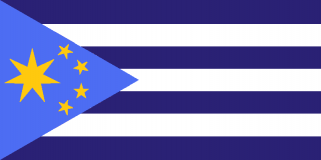Europa Commune wrote:APPLICATION REQUESTGeneral Information
Full Nation Name: United Communes of Central Europe
Short Nation Name: Europa Commune
National Demonym: Central Europan
Capital City: Wien
Requested Map Location: I finished my original claim, but afterwards I thought that may be too much, so I also drew a (less preferential mind you) small claim as an alternative.
Short Description of National History: Since the end of the 20th century, the hope for a true revolution, one really of the people, began to brew. The remnants of the 4th International (which lasted a bit longer in this timeline) reconvened in Wien and began assembling marches, protests, and general upheaval. When the workers were denied a referendum, the beginnings of a violent revolt were formed. On the 1st of May, 2017, the revolution began in Wien, ending in surprising and quick success as the military of (Austria?) was deployed in Tirol, where the revolution was expected to occur. The Wien Commune was formed and as (Austria?) began to capitulate with a toppled government and similar revolutions suddenly began to burst out around Central Europe. Now, today, it is finally over, resulting in a resounding success, and we can finally begin to rebuild.Government
Government Type: Parliamentary Commune Confederacy
Head of State: Zdislava Luxembourg
Head of Government: Zdislava LuxembourgEconomy
GDP: 2,538 Billion NSD (Large claim) 1,558 (Small Claim)
GDP per capita: 16,820 now, right after the revolution, but 39,192 if a stability is ever achieved.
Economic System: Communism/Socialism
Economic Stage: Recovery
Name of Currency: Beur
Conversion rate into USD 1 USD = 98 ECBDemographics and Culture
Population: 64,764,289 (Large claim) 39,782,054 (Small Claim)
Official Language: Officially, there is no official language, however our capital city is Wien so the unifying government meets speaking (oster) German.
List Regional Languages: Croatian, Czech, French, German, Hungarian, Italian, Polish, Romanian, Romansh, Gagauz, Ukrainian, Slovak and Slovenian.
Is there a National/State religion?: No
Short Description of Culture: So incredibly broad that it is hard to state. The historical culture varies greatly by where you are, however all places are permeated by the comradery and fervor of the revolution, making the populous have extra hospitality and joy toward one another.Military
Active Personnel: 822,743
Reserve Personnel: 409,880
Total:1,232,623
(Half military numbers for small claim)
Approved. See your telegrams.




